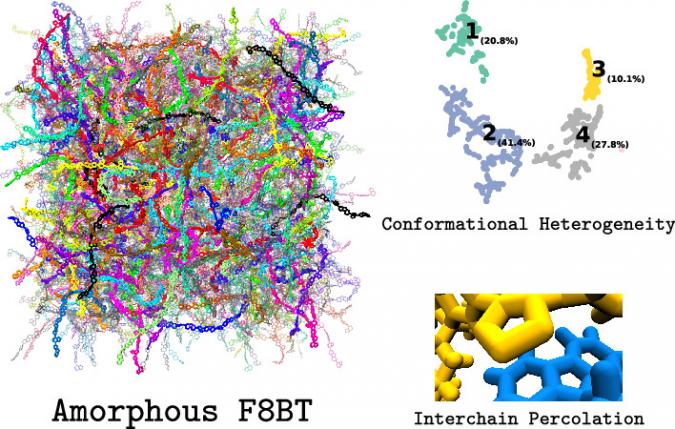LCN researchers at King’s have combined molecular dynamics simulations with machine learning and graph theory to provide a detailed understanding of the structural properties of amorphous conjugated polymers which could be useful in designing new conjugated polymer nanoparticles (CPNs).
Conjugated polymers are used in a wide range of applications due to their intrinsic fluorescence brightness, photostability, and biocompatibility. CPNs are formed to provide stable formulations to be used in medical therapy, biological imaging, sensing, and organic and bioelectronics.
Recent cryogenic tunnelling electron microscopy has been used to study the nanoscale structure of CPNs, resulting in the characterisation of crystalline phases, but amorphous regions remain elusive. The team used molecular dynamic simulations to investigate amorphous F8BT and showed the role of its nanoscale structure in controlling its emergent (and all-important) optical properties.
This work provides valuable insight into the nanoscale structure of conjugated polymers in the amorphous state and demonstrates that MD simulations can be a useful source of design inspiration for next-generation CPNs.
Their findings are published in ACS Nano.
Figure: Conformational Heterogeneity and Interchain Percolation Revealed in an Amorphous Conjugated PolymerRobert M. Ziolek, Alejandro Santana-Bonilla, Raquel López-Ríos de Castro, Reimer Kühn, Mark Green, and Christian D. LorenzACS Nano Article ASAP DOI: 10.1021/acsnano.2c04794



